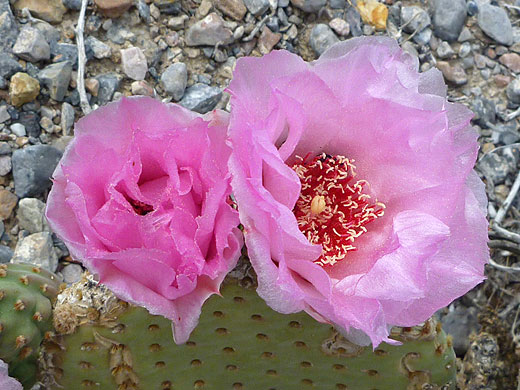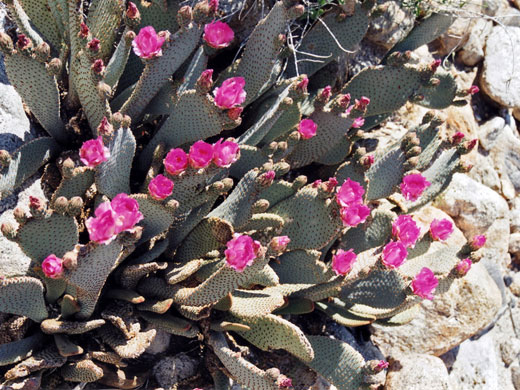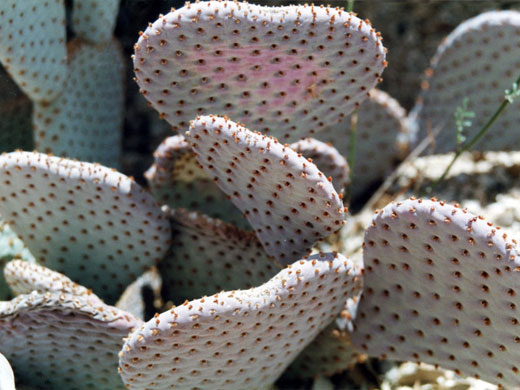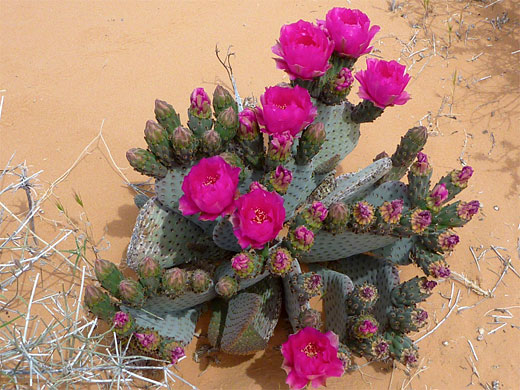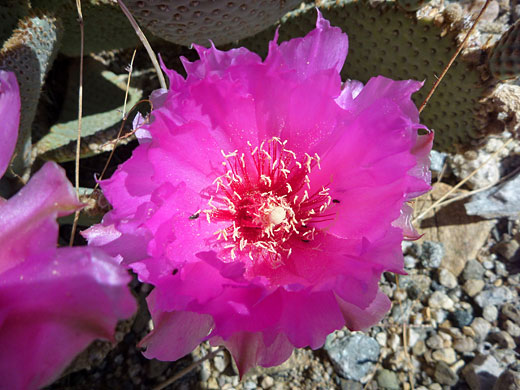Scientific name:
Opuntia basilaris
Common name:
Beavertail prickly pear
Range:
East California, south Nevada, west Arizona and south Utah
Form:
Low clumps, close to the ground
Habitat:
Varied; pine/oak/juniper woodlands, scrubland, canyon sides, sandy flats. Up to 7,000 foot elevation
Flowers:
Dark pink

Distribution map for opuntia basilaris
Characteristic features of opuntia basilaris are the complete absence of spines and the grey-blue color of the pads, which as the common name suggests, are shaped like the tail of a beaver. The plant forms low clumps, spreading sideways rather than upwards, and does not develop a woody central trunk. Pads are covered by fine velvety hairs in addition to the neat rows of glochids, and take on a purple tinge during arid conditions, when the surface can become shriveled. The cactus grows over a wide range of habitats, from hot deserts along the lower Colorado River to mountain slopes in south Utah.
All Contents © Copyright The American Southwest | Comments and Questions | Contribute | Affiliate Marketing Disclosure | Site Map


